The Calling of St Matthew
by Michelangelo Merisi da Caravaggio
Contarelli Chapel, Church of San Luigi dei Francesi, Rome
One of three paintings by Caravaggio on the theme of St Matthew in the small side-chapel of the Church of San Luigi, The Call of St. Matthew is renowned for its use of the chiaroscuro technique of which Caravaggio is perhaps the greatest proponent. The play of light and darkness not only adds drama to the painting but becomes a means by which the meaning itself of the painting is conveyed.
The light does not come in through the open window of the Custom House, but rather from an external source, and illumines the group of figures gathered around the table. Those figures are dressed in the contemporary clothing of Caravaggio’s late 16th century, whereas Jesus and Peter are anachronistically clothed and barefoot in the presumed manner of the 1st century. The window, with its cruciform internal frame, divides the two worlds. Only the light, and the hand of Jesus, cross the division of time and space. The hand of Jesus is reminiscent of the hand of God in Michelangelo’s fresco of the creation of Adam on the ceiling of the Sistine Chapel. The figure of Jesus is largely obscured by Peter who appears to be withdrawing his hand as though he has pointed to the wrong person. Yet Peter cannot obscure the divine light and the authoritative divine call which transcending all space and time, through the mystery of the cross, calls a particular individual in a decisive way.
Matthew cuts a surprised figure. He is surrounded by youth, wealth, and ignorance of the light, emphasising the radical nature of his calling. His facial expression almost articulates the words, “Who? Me?”, while his left hand appears to point to one of the others around the table, as if to say, “Him?”. His right hand is still involved with the coins on the table, but the presence on the same table of a quill and paper evokes the Gospel that the same hand will write. The sword carried by one of the other figures at the table evokes the martyrdom that Matthew will undergo, as a consequence of his “yes” to this decisive moment when the heavenly light illumined him and called him to leave all in order to follow the man from Galilee.
Written by Fr Declan Hurley, Priest of the Diocese of Meath

